This article was medically reviewed by Theodore Leng, MD. Dr. Leng is a board certified Ophthalmologist and Vitreoretinal Surgeon and an Assistant Professor of Ophthalmology at Stanford University. He completed his MD and Vitreoretinal Surgical Fellowship at Stanford University in 2010. Dr. Leng is a Fellow of the American Academy of Ophthalmology and the American College of Surgeons. He is also a member of the Association for Research in Vision and Ophthalmology, the Retina Society, the Macula Society, the Vit-Buckle Society, as well as the American Society of Retina Specialists. He received the Honor Award by the American Society of Retina Specialists in 2019.
This article has been viewed 774,710 times.
Similar to being right-handed or left-handed, most people have a dominant eye that works better for things like aiming. There are a number of ways to find your dominant eye, and doing so can help you improve your skills at everything from archery to taking pictures.
Steps
Evaluating Your Eye Dominance
-
1Try a simple pointing test. With both eyes open, point your finger at a distant object. Close one eye, then switch and close the other eye. Your finger should appear to move off or away from the object when one eye is closed. If the finger does not appear to move, then the eye you closed is your nondominant eye.
- Another variation of this test is to stretch your arms out in front of you and form a triangular-shaped hole with your fingers. Look through this hole at an object about 10 feet (3 m) away, keeping both eyes open. Without moving, close one eye, then the other. The object should appear to move, possibly out of the triangular window, when you close one of your eyes. If it moves, then you are looking through your nondominant eye.
-
2Conduct the Distance-Hole-In-The-Card test. This test examines which eye you use to focus on objects that are 10 feet away. You can easily perform it on yourself at home.[1]
- Cut a hole in a piece of paper that is about an inch and a half in diameter. On a second piece of paper write a single letter so that it is roughly one inch high.
- Tape or tack the paper with the letter onto a wall at eye level. Measure a distance of exactly 10 feet away.
- Stand 10 feet away from the letter on the wall. Hold the paper with the hole in it at arm’s length with both hands. Your arms should be parallel to the floor.
- Look through the hole in the paper at the letter in the wall. When you can see the letter, have a friend cover first one eye, then the other. Don’t move or adjust your position. The eye that can see the letter is your dominant eye. If you can see it with both eyes, then neither eye is dominant in this task.
Advertisement -
3Do the Near-Hole-In-The-Card test. This test is similar to the distance test, but it examines which eye you use when focusing up close. You can also do it with quickly and easily with household objects.[2]
- This test can be done using a thimble, shot glass, or similar household object. Write a single letter on a piece of paper so that it is about 1/16th of an inch tall and wide. Tape this letter to the bottom of the inside of the thimble or shot glass.
- Cover the thimble or shot glass with paper or aluminum foil. Fix it in place with a rubber band or tape. Make a small hole that is about 1/16th of an inch in the paper or foil. The hole should be over the letter so that you can see the letter when looking through the hole.
- Put the thimble or shot glass on a table and lean over so that you can read the letter. Do not touch the thimble/shot glass or press your eye to the opening. Your head should be about 1 to 2 feet away.
- Don’t move your head while you look at the letter. Have a friend cover one eye, then the other. The eye that can see the letter is your dominant eye. If you can see the letter with both eyes when the other is covered, you don’t have a dominant eye for this test.
-
4Do the convergence test. This test examines which eye is dominant at extremely close distances. The results may differ from the results on the other tests.[3]
- Get a ruler. Write a single letter on a piece of paper. The letter should be about 1/16th of an inch high and wide. Tape the letter to the ruler so that it doesn’t move.
- Hold the ruler out in front of you with both hands. The letter should be at eye level. Focus on the letter. Slowly, with both hands, move the ruler straight towards your nose.
- Stop moving when one eye is no longer able to focus on the letter. That is the nondominant eye in this task. If both eyes remain focused until the ruler touches your nose, then neither eye is dominant in this task.
Using the Information
-
1Improve your skills. If you play sports or have hobbies that require you to depend solely on one eye, consider whether you are using your dominant eye. But remember that your eye dominance might vary based on distance. So be sure to consider your results on the most relevant eye dominance test. Then use that eye, rather than your nondominant eye. Your dominant eye may not be on the same side as your dominant hand or foot. Activities that require you to rely heavily on one eye include:[4] [5]
- Sighting a gun
- Archery
- Focusing a camera that does not have a large display screen
- Looking through a telescope or microscope
-
2Discuss the information with your eye doctor. Knowing your dominant eye is particularly important for people who wear monovision contact lenses. If your doctor prescribes monovision contacts for you, he or she will probably also test your eye dominance. There are two types of monovision lenses:[6]
- Monovision contacts. People with monovision contacts have a lens with a prescription for good distance vision in their dominant eye and a lens for reading in their nondominant eye.
- Modified monovision. This involves wearing a bifocal or multifocal lens in the nondominant eye and a lens for distance vision in the dominant eye.
-
3Ask your eye doctor about eye strengthening exercises. If you feel that one of your eyes is too weak, you may be able to strengthen your eyes by doing exercises. But always consult your doctor before starting an exercise regime to avoid eye strain. Your doctor may recommend:
- Convergence exercises. In these exercises you bring a ruler or pen slowly towards your nose. When you start to see double, stop and refocus until you see one image. If you need to, move the pen away slightly and try again.
- Practice focusing your nondominant eye close-up at reading distance, then far away. Ask your doctor how long you should maintain the focus at different locations. Then close your eyes to relax them for a minute.
References
- ↑ http://www.ncbi.nlm.nih.gov/pmc/articles/PMC2679867/
- ↑ http://www.ncbi.nlm.nih.gov/pmc/articles/PMC2679867/
- ↑ http://www.ncbi.nlm.nih.gov/pmc/articles/PMC2679867/
- ↑ http://www.learn-archery.com/eye-dominance.html
- ↑ http://www.ncbi.nlm.nih.gov/pmc/articles/PMC2679867/
- ↑ http://www.mayoclinic.org/diseases-conditions/presbyopia/basics/treatment/con-20032261
About This Article
To figure out which eye is your dominant one, point your finger at a distant object and close one eye. If your finger appears to move, then you closed your dominant eye. To find out which eye is dominant at close distances, write a small letter on a piece of paper and tape it to the end of a ruler. Hold the ruler out at eye level and move it toward your nose. As you move it down, your non-dominant eye will stop focusing on the letter. For tips from our reviewer on figuring out which eye handles focusing, read on!
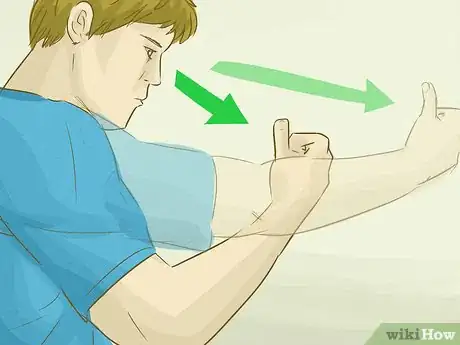
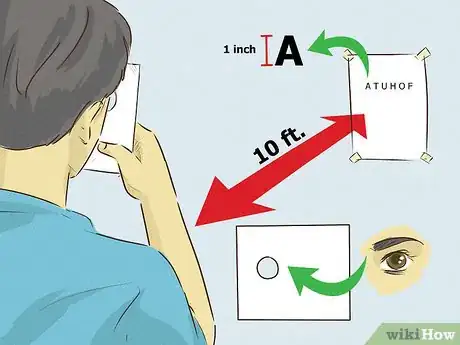

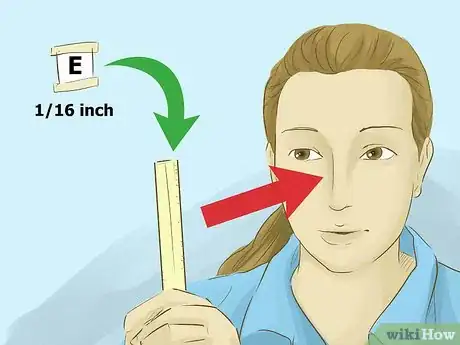
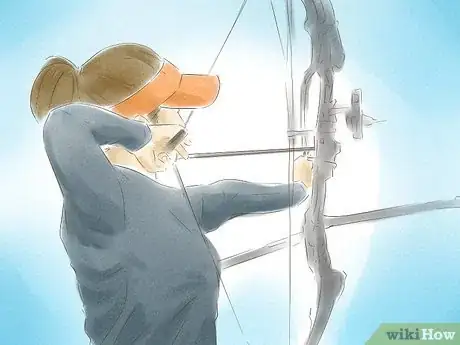



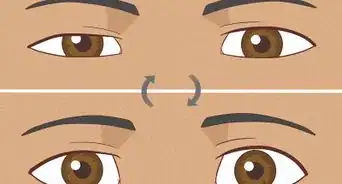
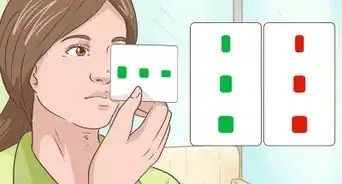
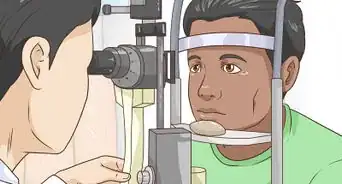


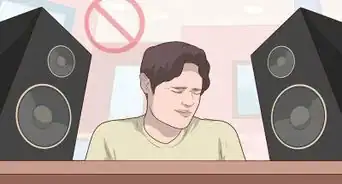

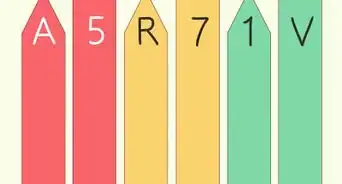











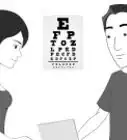


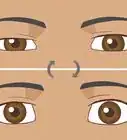



































Medical Disclaimer
The content of this article is not intended to be a substitute for professional medical advice, examination, diagnosis, or treatment. You should always contact your doctor or other qualified healthcare professional before starting, changing, or stopping any kind of health treatment.
Read More...